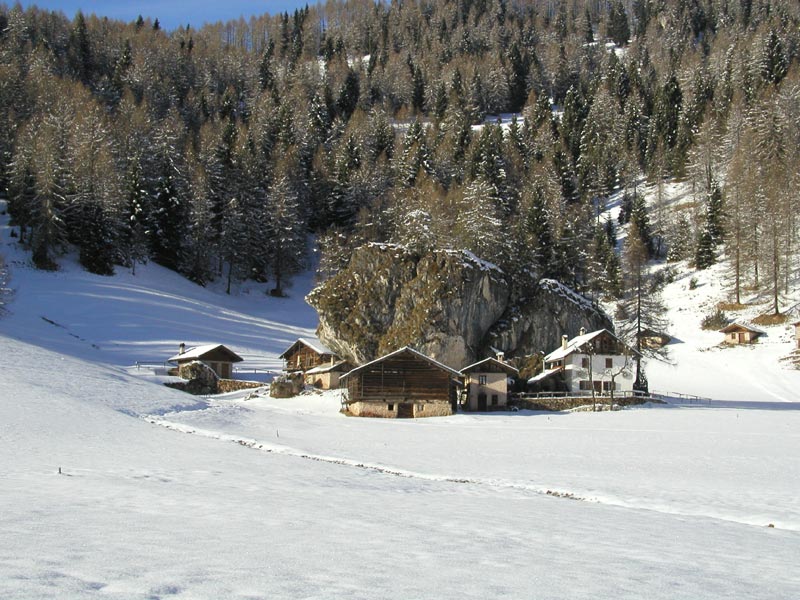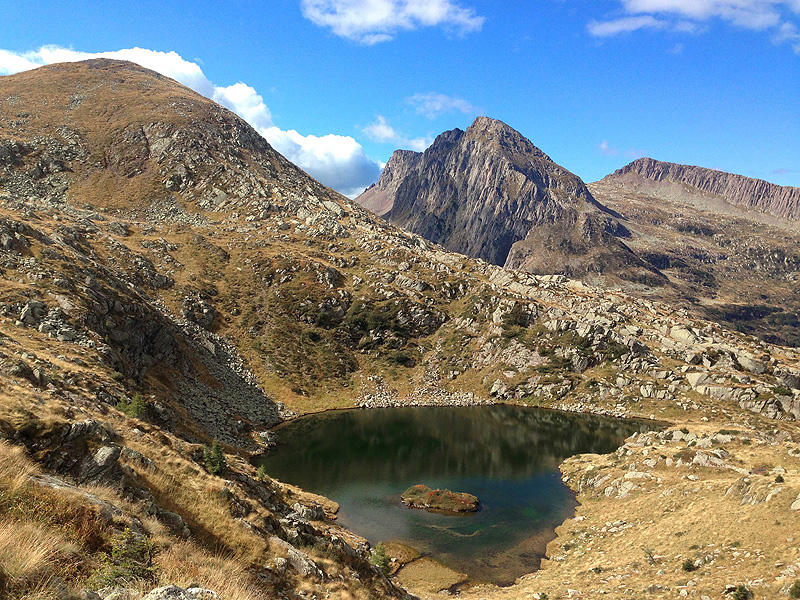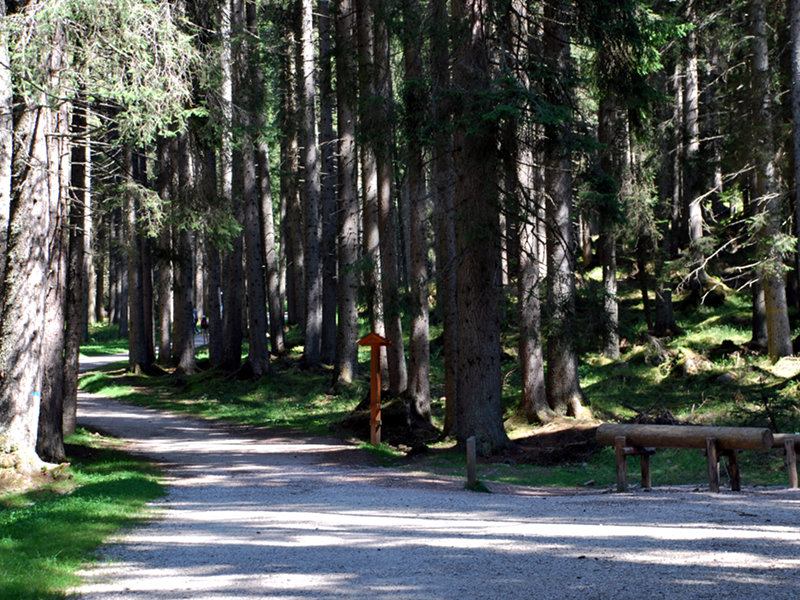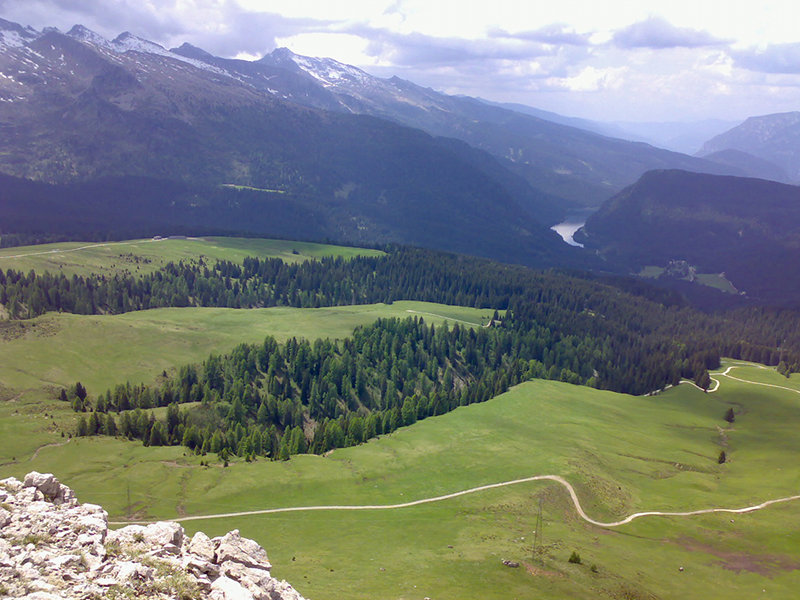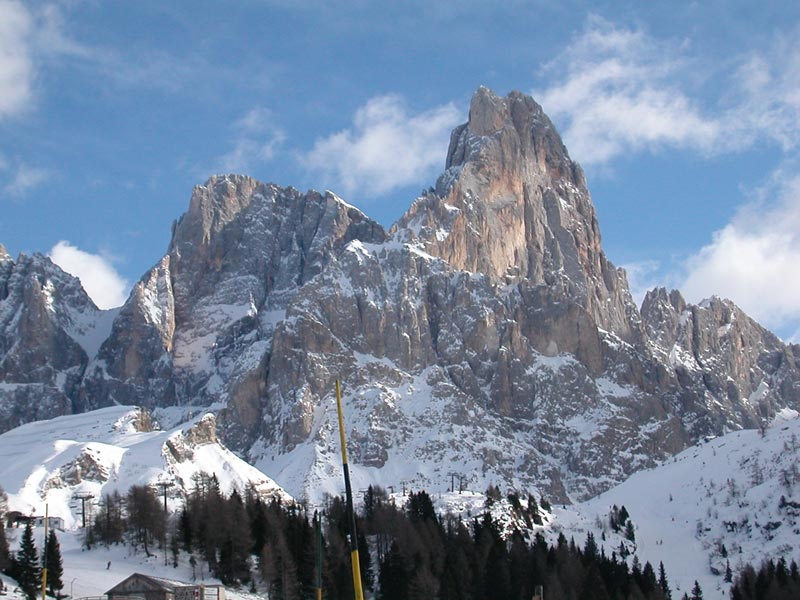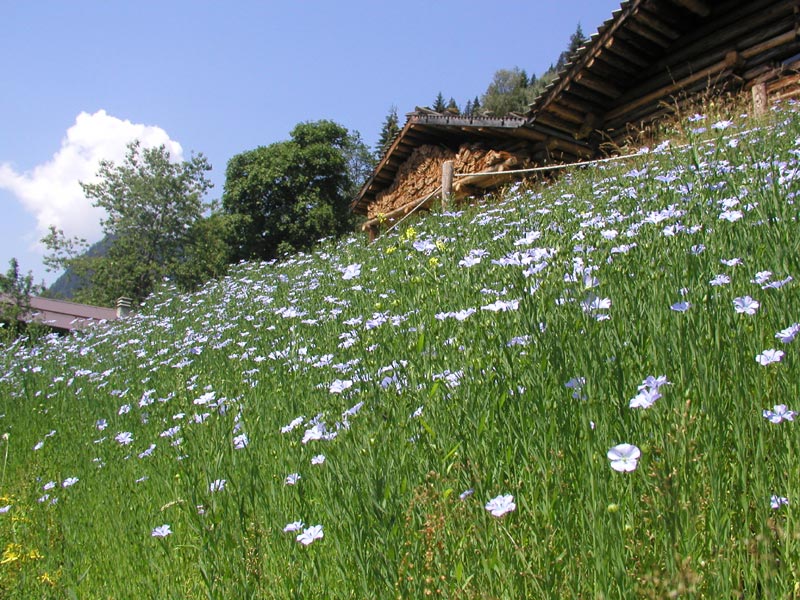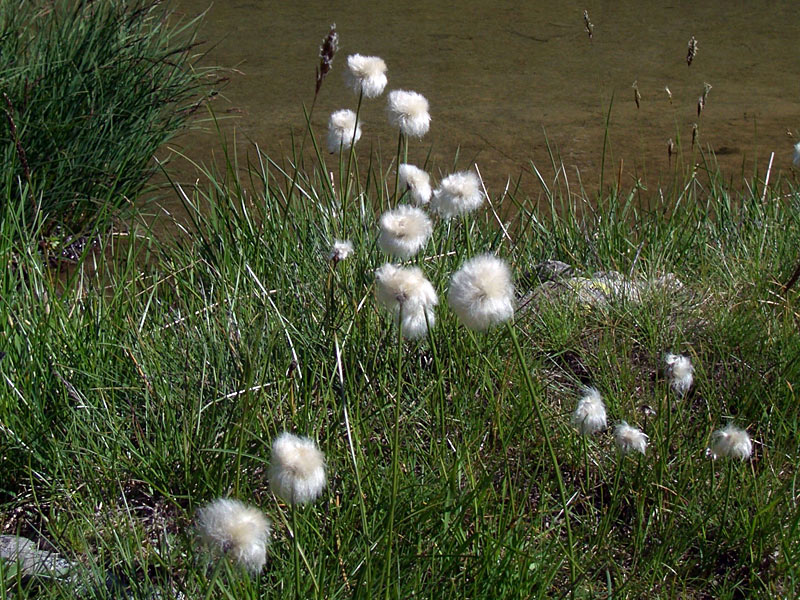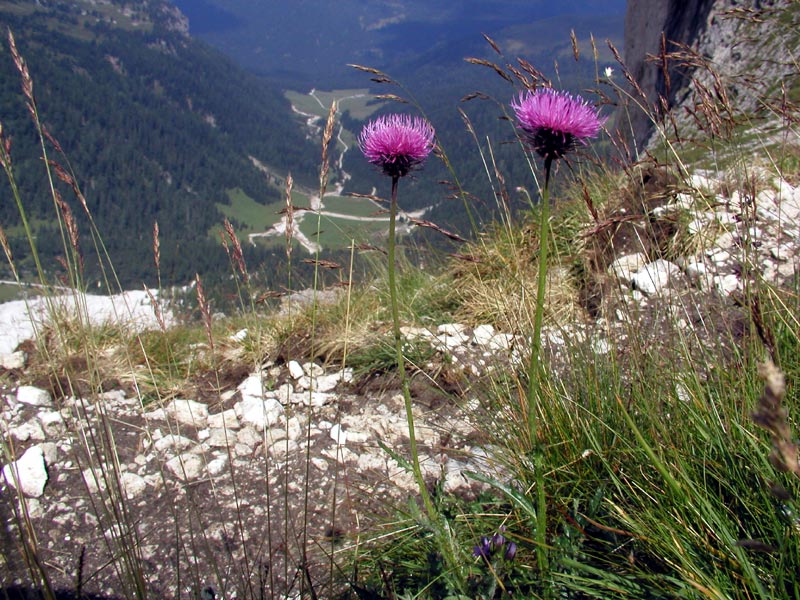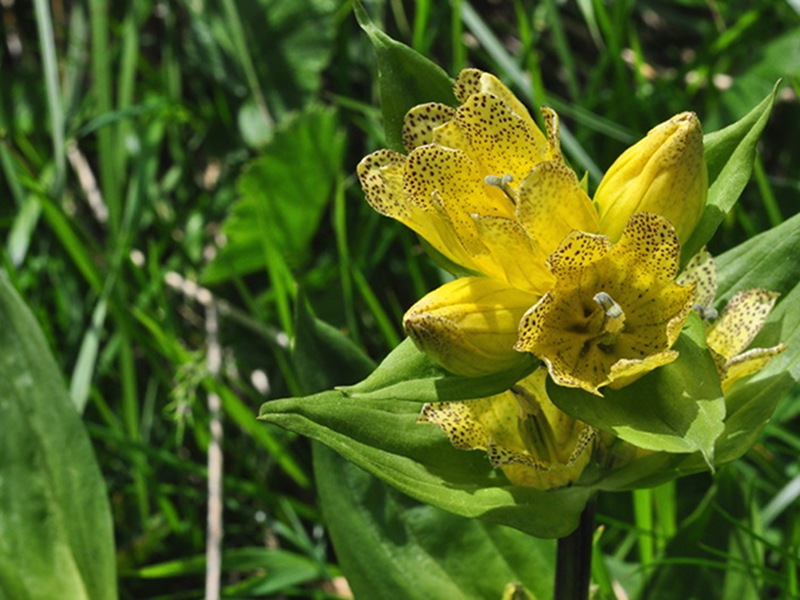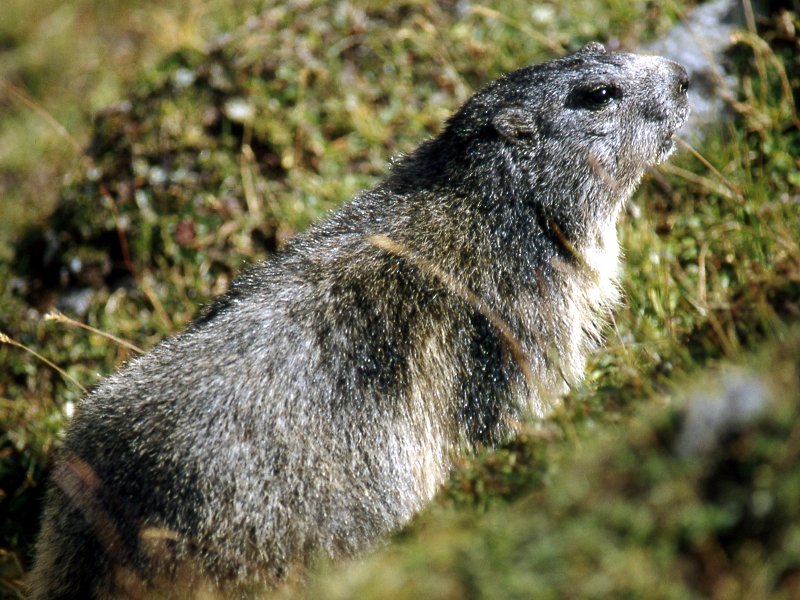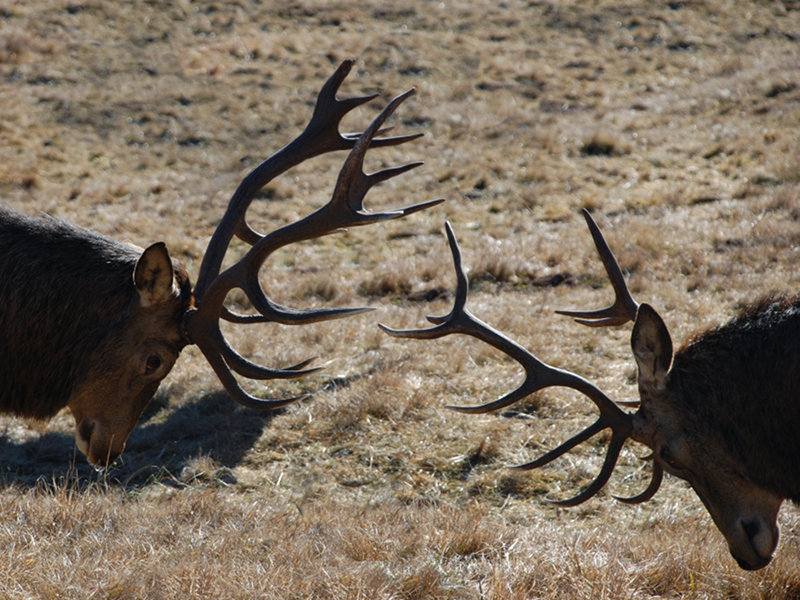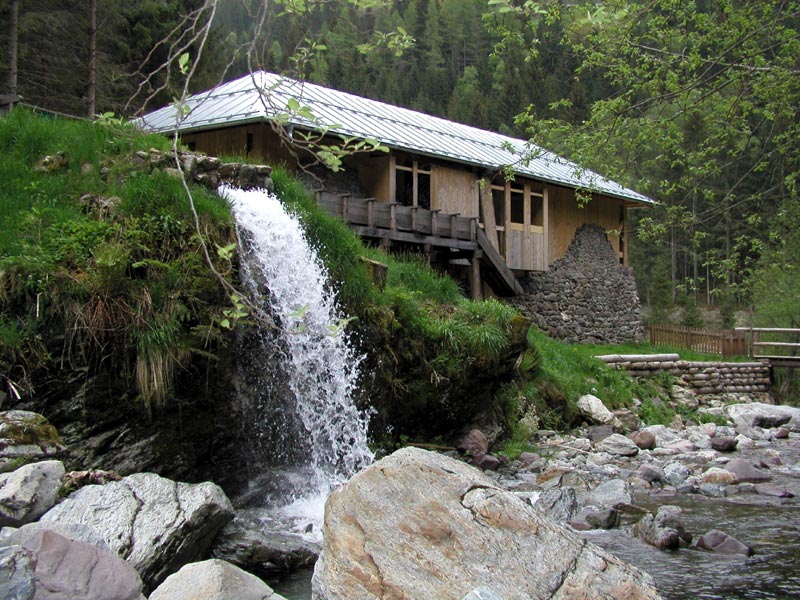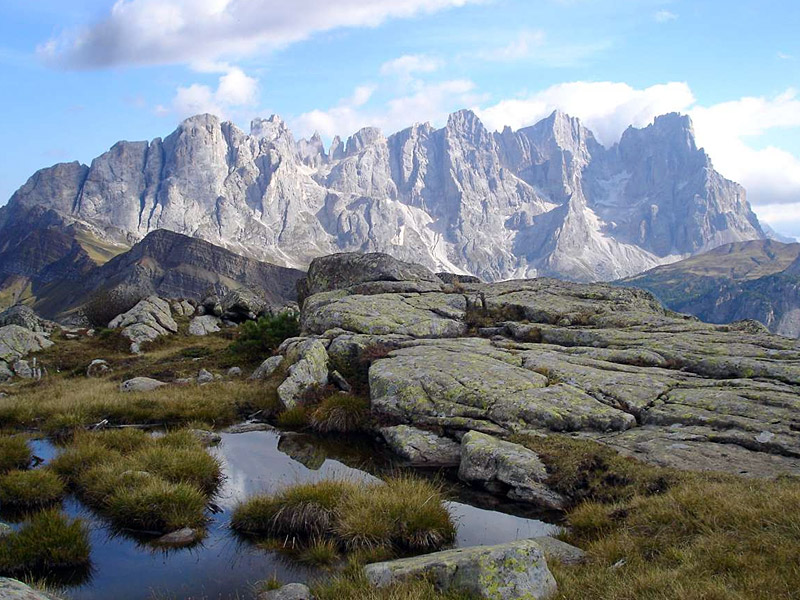Parco Naturale Paneveggio - Pale di San Martino
www.parcopan.orgProtected Area
Identity Card
- Paneveggio Pale di S.Martino Regional Park:
- Land Surface Area: 19'100.00 ha
- Regions: Trentino Alto Adige - prov. TN
- Provinces: Trento
- Municipalities: Canal San Bovo, Imer, Mezzano, Moena, Predazzo, Primiero San Martino di Castrozza, Sagron Mis
- Establishment Measures: LP 18 06/05/1988
- PA Official List: EUAP0232
- Park Authority: Ente Parco Naturale Paneveggio - Pale di San Martino
- Further managed Protected Areas:
- Zona Speciale di Conservazione Palu' dei Mugheri
Paneveggio and Pale di San Martino Park
It is situated in the eastern part of Trentino between Val di Fiemme and Val di Fassa in the north, Valle del Primiero with the stream Cismon in the south and Valle del Vanoi in the west. Its 197 square km include essentially three geographical-landscape units: the big forest of spruce firs, the Dolomitic complex of Pale di San Martino, and the eastern part of the large porphyry chain of Lagorai. For a better management, the territory is divided into some areas with a different level of protection, the so-called "RISERVE" (reserves) (Reserves), with different vocations and economic and social development. The Plan of the Park, an essential planning and management instrument definitively approved in 1996, has settled their extension and borders.
They are the following:
- the so-called "RISERVE INTEGRALI" (strict reserves) with the highest level of protection
- "RISERVE GUIDATE" (guided reserves) where activities which are compatible with the protection of natural environment are accepted
- "RISERVE CONTROLLATE" (controlled reserves) with a higher level of urbanization
- "RISERVE SPECIALI" (special reserves) presenting some important and peculiar natural features which should be protected in a specific way.
Paneveggio State-owned Forest
It is a big area in the northern section of the Park (about 2,700 ha, between the 1,500 and 2,000 meters above sea level) covered by woods of spruce firs, which have been managed for centuries with a wise policy focusing at the same time on production and conservation activities. These well-structured and ecologically complex conifer woods with very high trees (over 40 metres) and with such an extension are rare in Europe. However, this forest is also well-known all over Europe for another reason, and famous violin makers come and visit it: since its trees (the so-called "abeti di risonanza", or resonance firs) are particularly suitable for the production of violins which assume a particular resonance, this forest is called "La Foresta dei Violini" (The Forest of Violins). For a few years, the Forest has been object of specific scientific research activities dealing in particular with the damages caused by ungulates on the forest renewal and on the ecology and growth of spruce firs, and this year a specific study on the resonance of the Paneveggio spruce fir will start.
Peaks, Pinnacles, and Precipices: Pale di San Martino and Lagorai Group
Most of the territory is represented by what is considered the most spectacular feature of the Park: the imposing Dolomitic complex of Pale di San Martino, a big sedimentary plateau at 2,600 meters of altitude, witnessing the ancient presence of tropical seas and coral reefs of 250 million years ago. It represents for the whole Valle del Primiero, San Martino di Castrozza, Passo Rolle and Passo Valles a wonderful scenery that, according to the light, changes its colors from the very light gray of the dolomite to the pink typical of the dawn till the orange of the sunset. The highest peaks are Vezzana (3,192 meters) and Cimon de la Pala (3,194). Just "in front" towards West, tourists can see the eastern slopes of the Lagorai Chain characterized by its perfectly smooth and vertical walls, black, reddish or greenish: the remains of the ancient volcanic eruptions of almost 300 million years ago. The wonderful and still not very busy Valle del Vanoi creeps into the wild areas of this mountain chain.
Further Habitats in the Park
The Park is also rich in further different habitats: 1,500 hectares of meadows where cattle or flocks still graze interrupt the woodland and reach the foot of the rocky walls and screes; several blue stretches of water scattered throughout the Park witness the presence of ancient glaciers and color the rocky environments and high-mountain grasslands; raging streams continue with their shaping action, digging thin but deep ravines or depositing huge quantities of material into large riverbeds; broadleaf tree woods or mixed woods with conifers break the monotony of Paneveggio spruce fir wood, while towards the limit of the arboreal vegetation, where there are extreme ecological conditions, sparse formations with larch and Swiss pine and a rich undergrowth probably represent the richest and most charming vegetational habitat. Of great interest also some small wetlands, wet meadows and peat bogs housing very rare flower species.
(the following links lead to Italian texts)
Flora
The variety of habitats and geographical units, of geological and pedological substrata, explains the presence in the Park of such different ecosystems consisting of specific animal and vegetable associations. If in the monospecific spruce fir wood the undergrowth is not very developed and there are rare arboreal species that associate, in the woods of Val Canali, at lower altitudes, the beech tree dominates with spruce fir, silver fir, and sycamore maple, while the yew, sessile oak, ash tree, European aspen, Scotch pine, speckled alder, mountain ash are more occasional. The undergrowth and the border areas are enriched by several shrubs like the whitebeam, the hazelnut tree, honeysuckles, common and red edelberry, Cornelian cherry dogwood, Bloodtwig dogwood, hawthorn, barberry, goat willow. At higher altitudes, where larches and Swiss pines dominate, there are also some willows, edelberries, bilberries, rhododendrons, green alders, Swiss mountain pines, junipers, heathers. The flora is extremely rich and includes several orchids, some of which are very rare and characteristic of wetlands which have elsewhere disappeared.
Fauna
Despite hunting was not allowed in Paneveggio already in 1930, here and in the rest of the Alpine chain, some species of big mammals had disappeared already at the end of the last century. Among them: the wolf, the brown bear, the lynx, the vulture, the Golden eagle but also herbivorous species such as the ibex, the deer, the roe deer, or rodents like the marmot. Thanks to the new systems of preservation and planning and to several projects of reintroduction - marmot and deer - today in the high-mountain meadows it is still possible to hear the whistles of the marmots and to sight deer, roe deer, chamois, and Golden eagles. Moreover, there is a strong presence of black grouses, caper caillies, ptarmigans and hazel grouses. The avifauna is extremely rich and consists of: the rare three-toed woodpecker, the black woodpecker, the pygmy owl and the Tengmalm's owl, the goshawk, the eagle owl, etc. The raven, the snowfinch, the wheatear and the Alpine chough live among cliffs and grasslands. Mammals such as the hare, the fox, the ermine, the weasel, the badger, the marten, the dormouse, the squirrel and some micro-mammals such as shrews and voles are very common. It is important to say that the lynx came back to the territories of the Park and the neighboring ones.
Man and the Park
The first evidences of the human presence in the territory of the Park date back to remote days. Thanks to the study made by Museo Tridentino di Scienze Naturali some traces of human groups that can be dated back to the 7th and the
first half of the 6th millennium BC were discovered nearby Laghetti del
Colbricon, Malga Rolle and in the area between Piano dei Tiri and Buca
Ferrari. These are signs left by the hunters of the Mesolithic period
who came up here from the Alpine valleys to practice hunting.
In
the following periods, activities of sheep-rearing and breeding led to
considerable changes in the surrounding mountains: grazing lands
deriving from deforestation and the numerous "malghe" built in quite recent times represent the most evident signs of this activity.
During the First World War these mountains were the theater of some
dramatic events. For four long years the Austro-Hungarian and Italian
military detachments faced each other in continuous bloody fights.
Nowadays it is possible to see several evidences of those tragic days
such as a thin line formed by the rests of the trenches, wire
entanglements and the emplacements linking Pale di San Martino to
Lagorai passing through Passo Rolle.
Rocks
The territory of the Paneveggio Pale di San Martino Natural Park is characterized, from a geological point of view, by many substrates. The sedimentary rocks outcrop on the orographic left of the Cismon stream, while the Paleozoic igneous and metamophic ones emerge in the western area of the Park.




